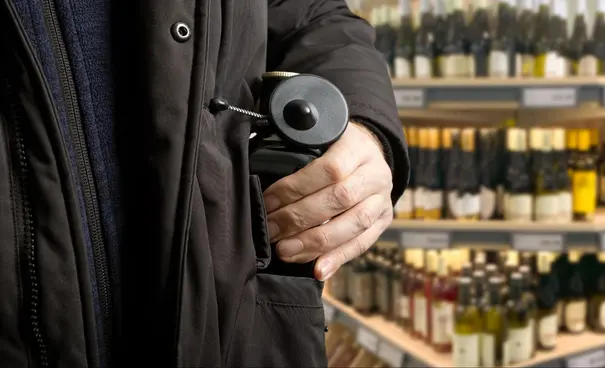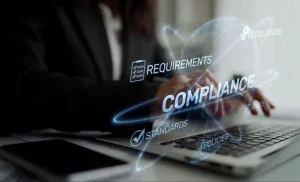Retail theft isn’t slowing down in 2025, and neither is the innovation aimed at stopping it. From classic tools like anti-theft tags and EAS gates to cutting-edge AI-powered analytics, the landscape of anti-theft devices for retail stores is evolving fast.
In this guide, we’ll walk you through the top anti-shoplifting devices, retail anti-theft systems, and emerging tech reshaping loss prevention in 2025. We provide you with a comprehensive security system, enabling you to fight retail theft at every level.
Top anti-theft systems and devices for retail stores:
Electronic article surveillance (EAS) systems:
EAS is one of the most common and cost-effective methods for preventing retail theft.
This modern retail anti-theft security system works through tags or labels placed on merchandise and detection gates installed at exits.
If an RFID tag crosses the gate without being deactivated at checkout, an alarm instantly alerts staff. The reason retailers continue to invest heavily in EAS is simple: not only does it catch theft in progress, it acts as a visible deterrent, signaling to customers that the store is protected.
Who is it for?
It’s suitable for fashion chains, electronics stores, supermarkets, pharmacies, bookstores, and any other location where goods can be concealed and carried out.
They are highly effective during high-traffic periods, such as weekends or holiday rushes, when the risk of shoplifting increases.
Types of EAS systems:
Radio frequency gates:
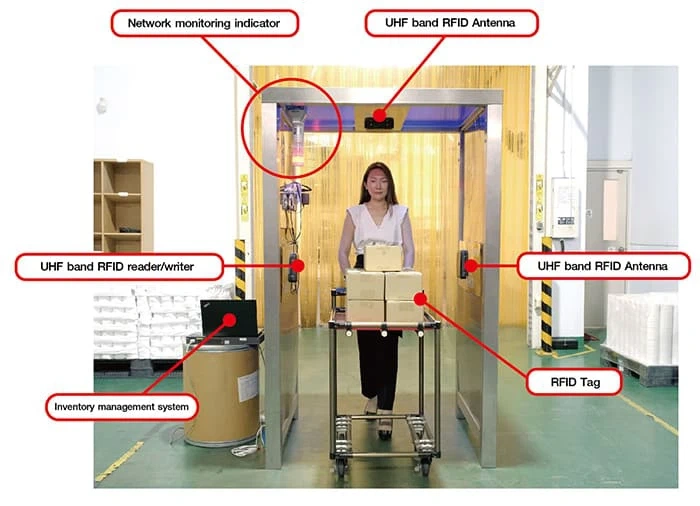
You can install RF gates at store exits and apply RF soft labels or hard tags to merchandise. Staff deactivate tags at checkout.
When to use RF gates: RF gates are affordable, easy to scale, and highly effective in high-volume retail environments such as supermarkets, bookstores, and apparel stores, where fast checkout and wide coverage are most crucial.
Electromagnetic gates:
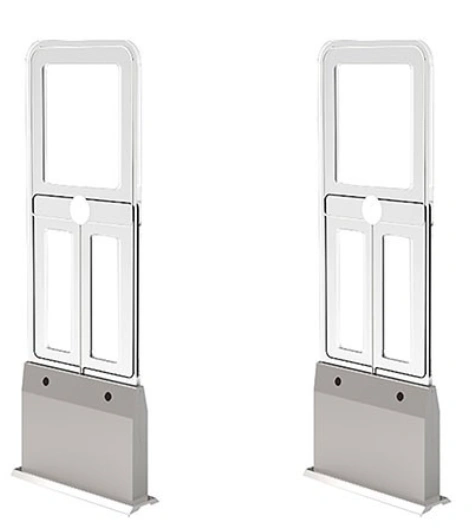
You apply a thin EM strip to small items like cosmetics, books, or pharmaceuticals, and rely on EM gates at exits to detect them.
They excel where product size makes traditional tags impractical. They’re the go-to for pharmacies and specialty retailers that need discreet yet reliable theft protection.
Acousto-magnetic gates:
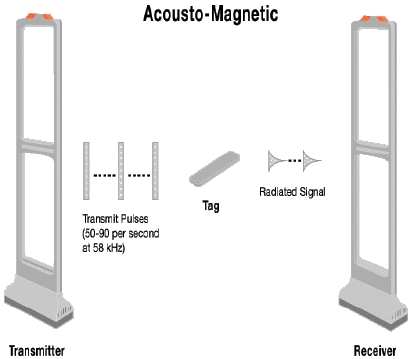
Pair AM gates with durable hard tags or labels for items like electronics, clothing, and liquor. The gates detect signals even when items are wrapped in foil or thick packaging.
Why to use: AM gates provide stronger detection in challenging environments, such as:
- High traffic areas, such as busy entrances/exits with constant movement.
- Metal-heavy environments, such as stores with lots of metal fixtures or carts, can cause interference.
- Large entry points, wide doorways, or mall-style open layouts, where detection is more challenging.
Anti-theft labels (Soft labels):
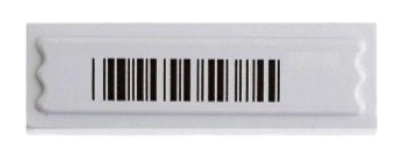
You can attach adhesive-backed soft labels directly to packaging. Deactivate them at checkout using deactivators or barcode scanners with built-in deactivation.
Why use: Soft labels are nearly invisible, making them perfect for low-cost or high-volume products. They provide a frictionless way to secure thousands of items without disrupting store aesthetics.
Anti-theft tags (Hard tags, Ink tags):
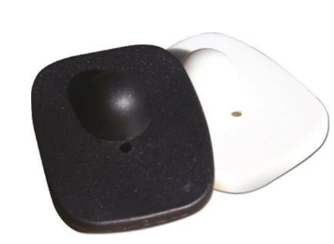
These hard tags can be attached with pin locks to clothing, accessories, or electronics. Use special detachers at checkout to remove them safely. Ink tags break and spill ink if forcibly removed.
Why use hard tags: They deliver visible deterrence. Ink tags add an extra layer of protection; any attempt to tamper with them damages the product, making theft pointless.
Physical and visual deterrents:
Security mirrors:
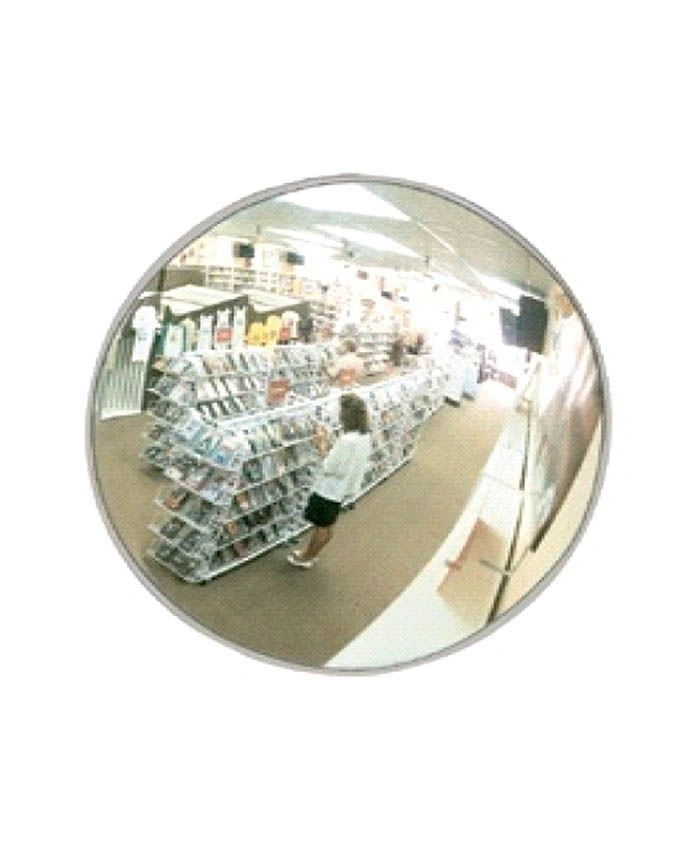
These convex mirrors expand the staff’s line of sight and create a psychological deterrent. Shoplifters know they’re being watched even when cameras aren’t visible. You can place them at :
- Corners of long aisles where visibility is blocked.
- Near fitting rooms and stockroom entrances.
- High-traffic blind spots, such as escalator exits or tucked-away product displays.
- Around checkout counters to give cashiers wider visibility.
Security signage:
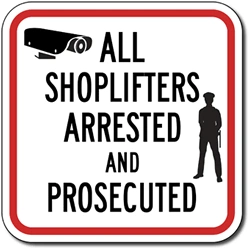
The most effective and cost-efficient way to prevent theft is to place clear, professional signs at entrances, shelves, and checkout lines.
It could be a warning, such as “CCTV in use” or “Shoplifters prosecuted”, but it has a high impact on reducing theft attempts by reminding customers that security measures are active.
Physical barriers:
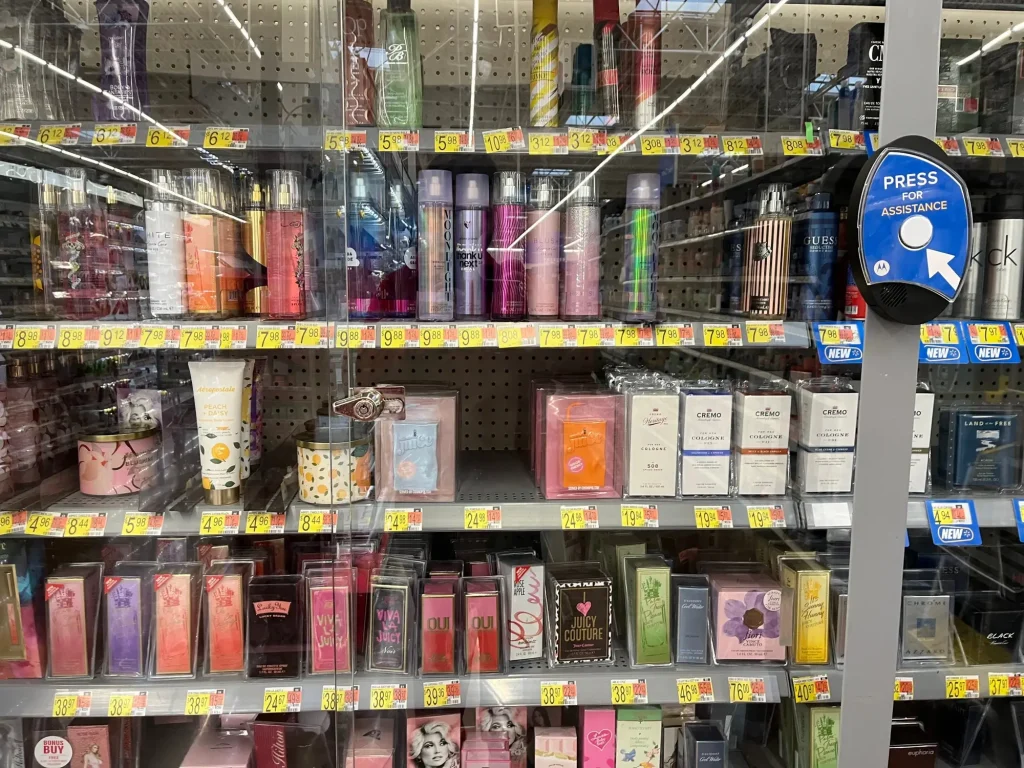
The best anti-theft security solution for smash-and-grab and mob theft has been the use of smart-lock display cases for electronics, bottle locks for liquor, or spider wraps that snap around high-value goods.
Spider wraps:
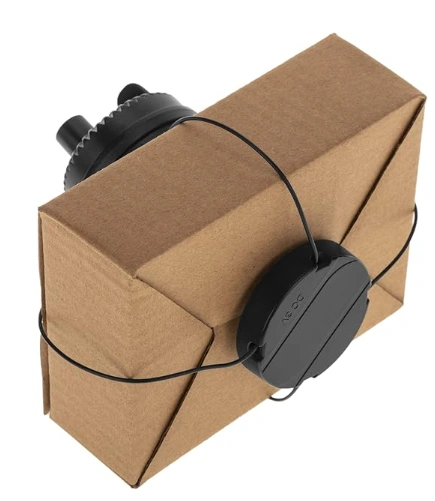
“Think of spider wraps as a seatbelt for boxed merchandise,” says retail security consultant Jenna Ruiz.
These plastic-coated cables stretch around LEDs, TV consoles, liquor gift sets, or cosmetics kits, anything bulky that thieves love to grab. If someone tries to cut or tamper with them, an alarm screams instantly.
Stores lean on spider wraps because they hit a sweet spot: customers can still see and handle the product, but walking out with it undetected is nearly impossible.
Are they effective? Absolutely. Determined thieves may still try, but they do add friction. In retail security, friction is often enough to deter a shoplifter from acting.
Advanced tracking and analytics:
AI video surveillance:
AI-powered security cameras remain the most effective devices for preventing store theft. Security cameras are so powerful that they not only detect suspicious shoplifting behavior in real-time, but also map how customers move through a store, identify repeat offenders using facial recognition, and even “hear” threats like glass breaking or aggression before they escalate.
These systems scan live video to identify suspicious behavior, such as loitering excessively in high-risk areas, concealing items, or attempting to exit without paying. Unlike traditional CCTV, you don’t need someone constantly monitoring the screen. The AI flags issues in real time.
Why do retailers use them?
Because theft doesn’t always look obvious. A trained algorithm can detect subtle patterns faster than the human eye and alert staff before merchandise leaves the door.
Imagine searching directly for theft events: “someone left the store with a bag without paying”. Yes, top-notch retail anti-theft systems make it possible!
Body-worn cameras for retail staff:
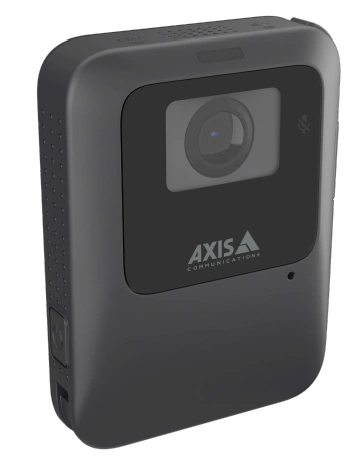
For frontline retail employees, safety and accountability matter every day. Body-worn cameras provide staff with an additional layer of protection, enabling them to capture incidents clearly and de-escalate tense situations.
Models like the W110 and W120 are becoming standard in enterprise retail. It serves not only as a deterrent against theft but also as a reliable tool for incident verification.
Remote video monitoring:

AI-powered Remote Video Monitoring adds a crucial layer of security for shopping malls and retail stores. It is a layered anti-theft security approach.
The moment an intrusion or suspicious behavior is detected, an alarm is triggered, protecting not just the inside of the store but also the perimeter and parking lots.
Instead of relying on a single guard or a handful of cameras, Remote Video Monitoring creates overlapping protection zones. This image is a great illustration of how remote video monitoring creates a layered security system by covering multiple points of vulnerability inside and outside a store.
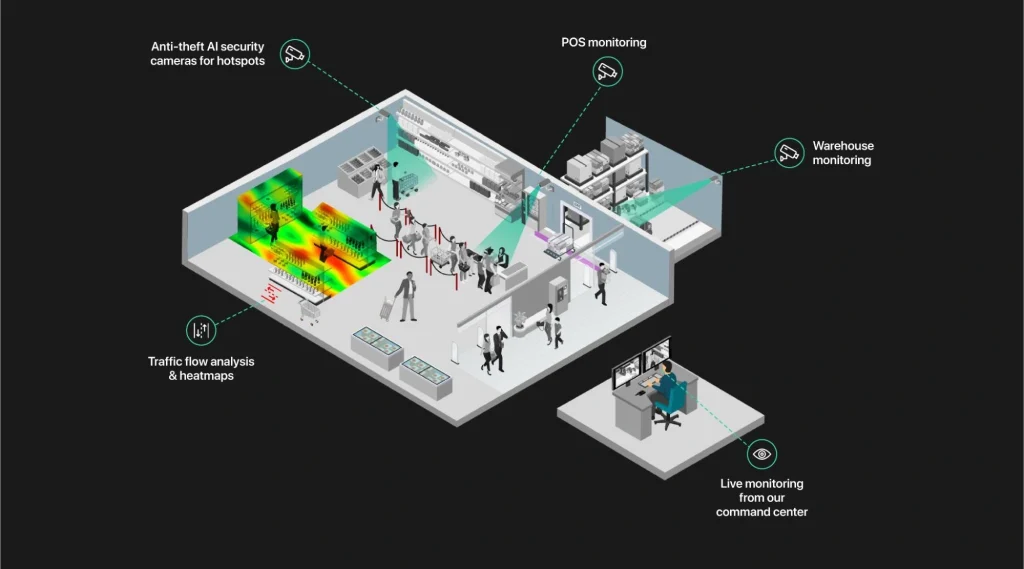
As soon as the alarm is triggered at the remote video monitoring center, the trained remote operators spring into action, accessing live video feeds and assessing the situation. The entire process takes place rapidly, from detection to action.
You can decide how you want to be alerted if the threat is detected. You have the following two options to choose from:
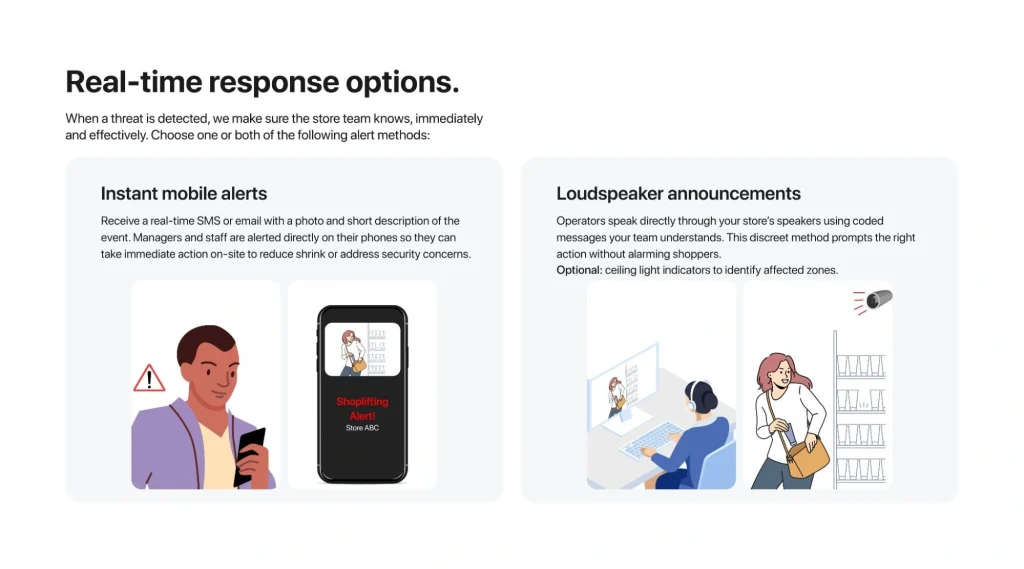
Instant mobile alerts:
You can get a real-time text or email with a photo and a quick description of what’s happening. Your managers and staff receive the alert directly on their phones, allowing them to step in immediately and prevent shrinkage or address security issues on-site.
Example:
Shoplifting Alert – Store ABC
Loudspeaker announcement:
Remote operators can communicate through your store’s speakers using coded messages that your team already knows. It’s a discreet way to guide staff into action without alarming shoppers. You can also add optional ceiling light indicators to highlight the affected area.
POS integration tools:
POS integration links your cash register data (refunds, discounts, voids) with video from your security cameras.
Every transaction is tied to footage, so you can instantly see if a cashier missed a scan, gave free items to friends, or processed fraudulent returns.
For retailers, this is a game-changer in the fight against sweethearting, fake returns, and employee theft, the subtle losses that add up quickly but often go unnoticed.
New tech tools fighting retail theft:
Advancements in security tech are giving retailers smarter ways to stay ahead of theft. From AI to forensic sprays, these tools go beyond old-school cameras and alarms:
- DNA spray. This system marks offenders with an invisible forensic ink that glows under UV light. Even weeks later, police can identify and tie suspects to the scene.
- Linking RFID and video feeds. This system links RFID-tagged items with surveillance footage, creating a digital trail for every product. If something goes missing, managers can pinpoint when, where, and how it happened.
Frequently asked questions:
How to reduce theft in retail stores?
Retail theft drops with layered security from surveillance cameras and AM gates to trained staff and real-time monitoring. Combining technology and strategy keeps both assets and people safe.
What security devices are used to prevent shoplifting?
Common retail security devices include CCTV cameras, AM gates, RFID tags, and body-worn cameras. These tools deter theft, capture incidents, and support quick response.
What is the most effective anti-theft device?
The most effective anti-theft device for retail is a verified alarm system paired with video monitoring. It ensures instant detection, real-time response, and foolproof protection.
Do anti-theft stickers actually work?
Yes, anti-theft stickers are effective when paired with detection systems, such as automatic gates. Alone, they’re limited, but within a layered setup, they’re a cost-effective deterrent.”
Conclusion:
The top anti-theft devices for retail stores include proven tools such as EAS gates, tags, and packaging locks, as well as advanced AI-powered video monitoring and body-worn cameras.
Retail theft in 2025 demands layered protection, not single fixes. The best systems work together to deter, detect, and respond in real-time.The takeaway? A multi-layered security strategy is the most effective way to protect your store, your staff, and your bottom line. Contact us today to discuss a customized security solution specifically designed for your retail business.

